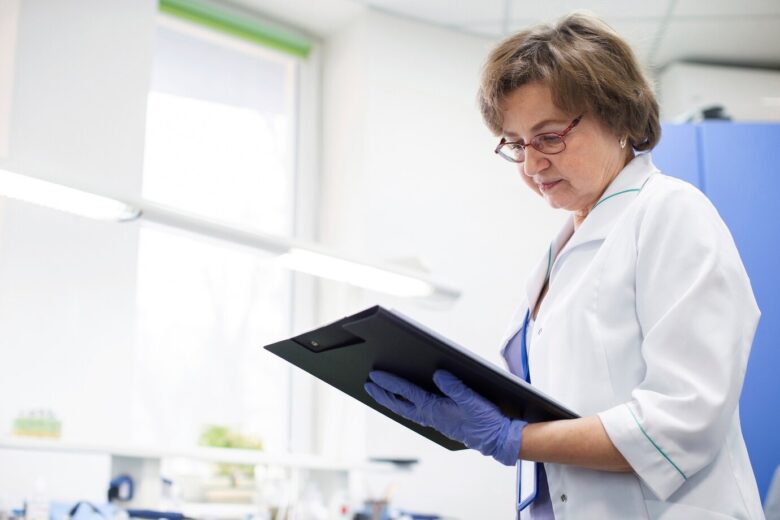Regarding hormone treatments, especially human growth hormone (HGH), safety is a crucial issue. The knowledge and correct implementation of safety guidelines would help healthcare providers and patients as well. This matter of how to get HGH should be principally based on some medical evaluation and a physician’s prescription, provided that the attending healthcare expert subscribes to such a prescription. This way peasants as well shall not be left out rather than it is a need to the specific health care system of the patient.
Proper human use of HGH depends on people realizing safe dosages of this hormone that differ relative to the health status of a patient and the therapy objectives. The patients to regularly visit their healthcare providers for the monitoring of the therapeutic effects and also the side effects of the treatment plans is very essential.
While it is up to the healthcare providers to stay informed about the recent HGH therapy guidelines and research, it is upon the patients to be aware of the consequences of Human Growth Hormone supplementation on their bodies. They have to carefully conduct detailed assessments of the patient before prescribing HGH, with considering the possible risks and benefits in every case.
It is imperative that proper training in patients’ accurate administration of Human Growth Hormone, contra-indications knowmanship and adverse reactions recognition is the key. This extensive strategy not only helps reduce the risks, but also improves the therapeutic effects of Human Growth Hormone, and therefore ensures that patients do not face more detriments during the treatment trials.
Contents
Guidelines for Safe Administration of Growth Hormone

Source: freepik.com
There is therefore a need to set the correct quantity of HGH that will help in achieving the required goals. Furthermore, it is different for every condition and patient. Dosage should be carefully determined by medical managers, normally starting off very subtle and upping the chosen dose depending on the feedback from the patient and side effects, if any. The make or break indicates such attributes as age, weight, the degree of hormonal deficiency and the presence of other disorders. And these factors are instrumental here.
In pediatric patients whose growth hormone levels are below the norm, the dosage is usually administered on the per body weight or surface area base, meaning midway through growth, the drug dosage has to be modified as well to match their size. Different dosage doses will be administered to adults, however, the amounts will be lower in terms of age, as more side effects tend to develop in older ones at high doses.
In the context of bodybuilding, adults might seek growth hormone treatments for enhanced muscle growth and recovery, yet this use requires careful monitoring to prevent adverse effects. The people who have Turner syndrome or chronic kidney disease need to be dosed in a way that addresses their state of health.
Administration Techniques
It should be indicated cautiously while taking the risks with possible complications and the effectiveness of treatment while carrying on the growth hormone injections. Here’s a step-by-step guide primarily aimed at patients and caregivers:
- Hygiene: The basic guidelines are that you need to wash your hands thoroughly with soap and water before handling any medication or the injection kit. Make sure that first the place of the puncture and later the vial stopper are cleaned with an alcohol swab.
- Preparation of Injection: Always pre-fill the syringes only when about to administer the injections. It deals with getting the powder of the hormone mixed in the prepared sterile liquid by following the process to the letter and never once shaking the solution violently for that may damage the hormone.
- Site Selection: Choose different places to inject like the extremities for skin damage or irritation avoidance. They are frequently observed over the thighs, buttocks, and the belly. Only use these pills in those spots which are not painful, red, or inflamed.
- Injection Technique: Employ a fine needle for comfort instead of a regular one and insert HGH under the skin surface, which is known as subcutaneous administration. This results in better assimilation and resembling the pituitary gland’s natural hormone discharge behavior.
- Post-Injection Care: After performing injection, just press on the site of injection with sterile cotton ball or gauze for a few seconds, it is not recommended to rub. Throw the used needles and syringes away in a sharps disposal container after handling them with care.
- Monitoring: As you record injection sites and any reactions you have had to treatment, share such with your caregivers to initiate necessary adjustments in the procedures.
Responsibilities of Medical Professionals

Source: freepik.com
Constant education is very crucial for both healthcare providers and the patient, as well, in the area of safety in growth hormone administration. As advancements in treatment and changes to safety guidelines emerge, staying updated ensures that the latest, most effective, and safest practices are followed.
Healthcare professionals have to do in time reading up on the newest research in the field, taking part in professional development events such as conferences, and subscriptions to medical journals. Meaning it not only deepens knowledge and skills but also ensures that patients are able to control the incidence of adverse events associated with growth hormone treatment, such as joint pain, insulin resistance, and other effects that limits the endurance to more medical interventions.
For patients, understanding these updates can foster better compliance and engagement with their treatment plans, ensuring they benefit fully from the therapy while maintaining safety.
Patient Education and Support
Educating patients about growth hormone is not only about explaining how to straighten the hormone and develop but also teaching the health care capabilities of self-care for such purposes. One of the beginning steps for healthcare providers should be to get the treatment details across to patients and their guardians in a simple and clear manner on what hormone therapy can and cannot do. This includes discussing the realistic timelines for expected results and possible side effects.
Instruction should be specific, show how to mix the medicine and inject it, and also underline the idea of unquestioningly complying with the prescribed dosage. By using, for example, diagrams and videos explaining the techniques and providing the patients with easy-to-read home guidance written material, the Medics will be able to assist them in their lifetime. Furthermore, regular follow-up appointments are crucial. These enable the healthcare professionals to measure the efficacy of the treatment, and remedy the necessary adjustments and the critical message for following the order.
Giving tools like agent hotlines or patient support groups, for example, can have a similar effect, as they give people more confidence and help them to be more secure during their therapy. This comprehensive educational approach ensures patients are well-informed, prepared, and proactive in their treatment, leading to better outcomes and greater satisfaction with their care.
It is also important to mention the application of growth hormone in fields like bodybuilding, where it is used for muscle mass enhancement and recovery. While this use is widespread, it must be approached with caution, emphasizing the need for professional supervision to avoid potential health risks associated with improper dosing. This aspect of hormone therapy highlights the diversity of its applications and the necessity for tailored educational efforts depending on the patient’s goals and health condition.
Recap of Key Points on The Safe Use of Growth Hormone for Therapy

Source: freepik.com
Concern in growth hormone usage for therapy delivery involves more than one critical issue highlighting to harmonize both the patient’s effectiveness and security. First and foremost, it is crucial that therapy starts only after the health professional who has already had a full-scope diagnosis by all the necessary tests confirms and makes provision for the hormone deficiency beforehand.The appropriate dosing must be determined based on individual factors such as age, weight, and severity of hormone deficiency, rather than a one-size-fits-all approach.
Patients have to adhere very strictly to medication schedules and must follow injection protocols in an exact way so as to minimize the risk of joint and muscle pain or any other side effects like increased blood sugar level. To avoid possibly harmful side effects, the patient’s regular checkups with health care professionals is a must to periodically adjust the dosage.
Additionally, patients should be educated about the importance of lifestyle factors like diet and exercise in conjunction with their treatment. Such an integrated view will be made to ensure that the positive aspects of growth hormone treatment are fully capitalized on in a way that promotes patient health without posing any risks.
